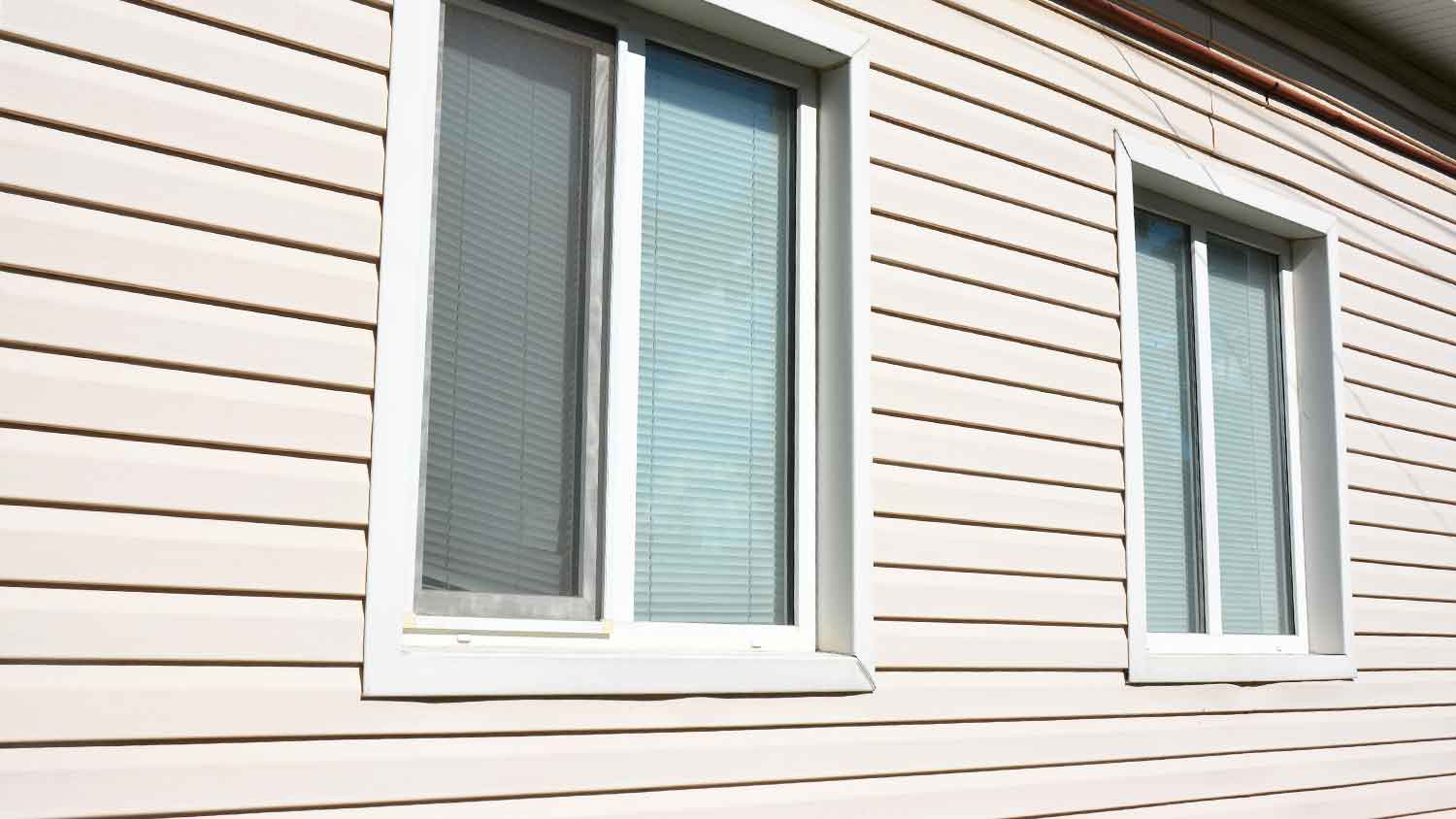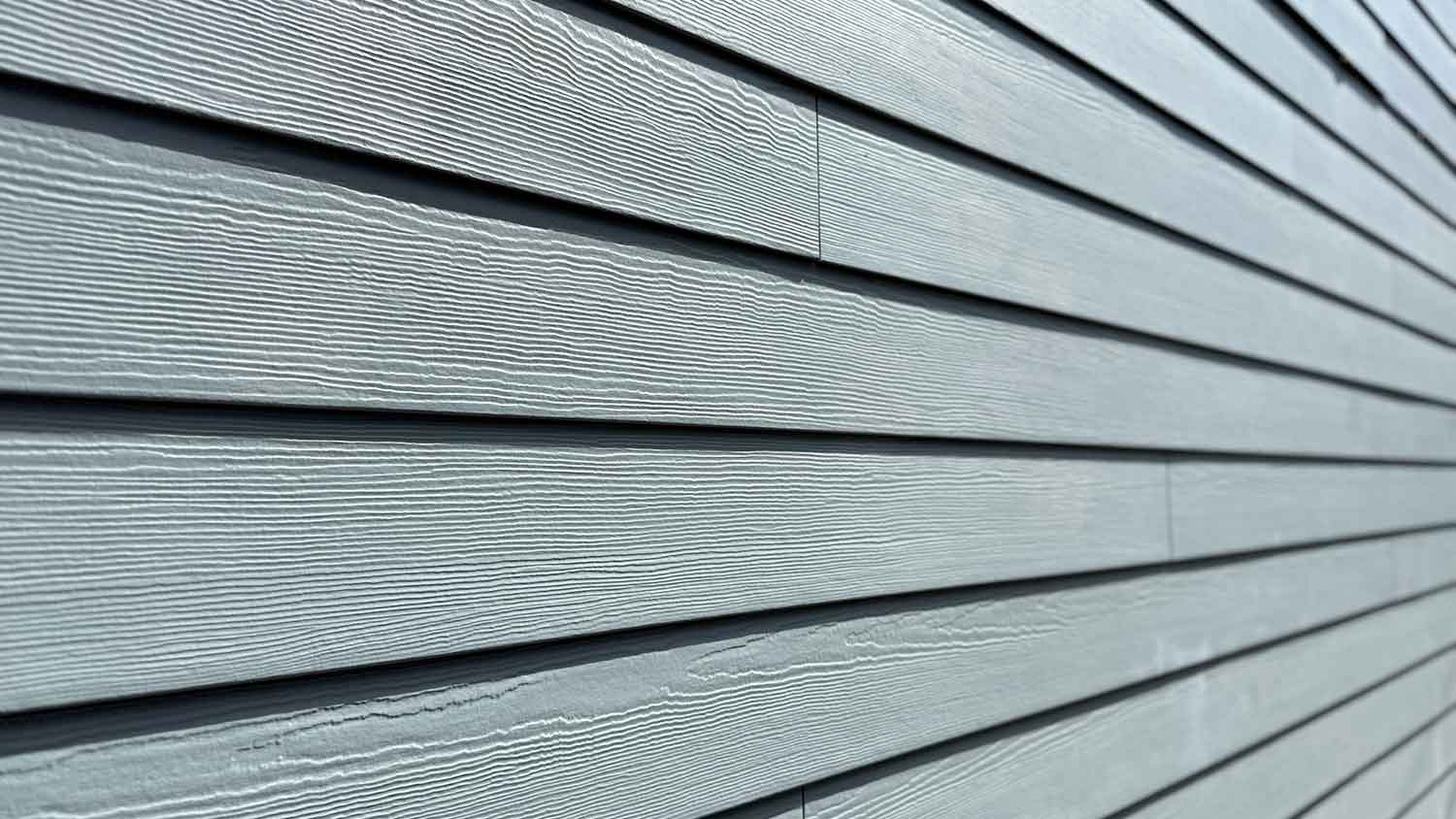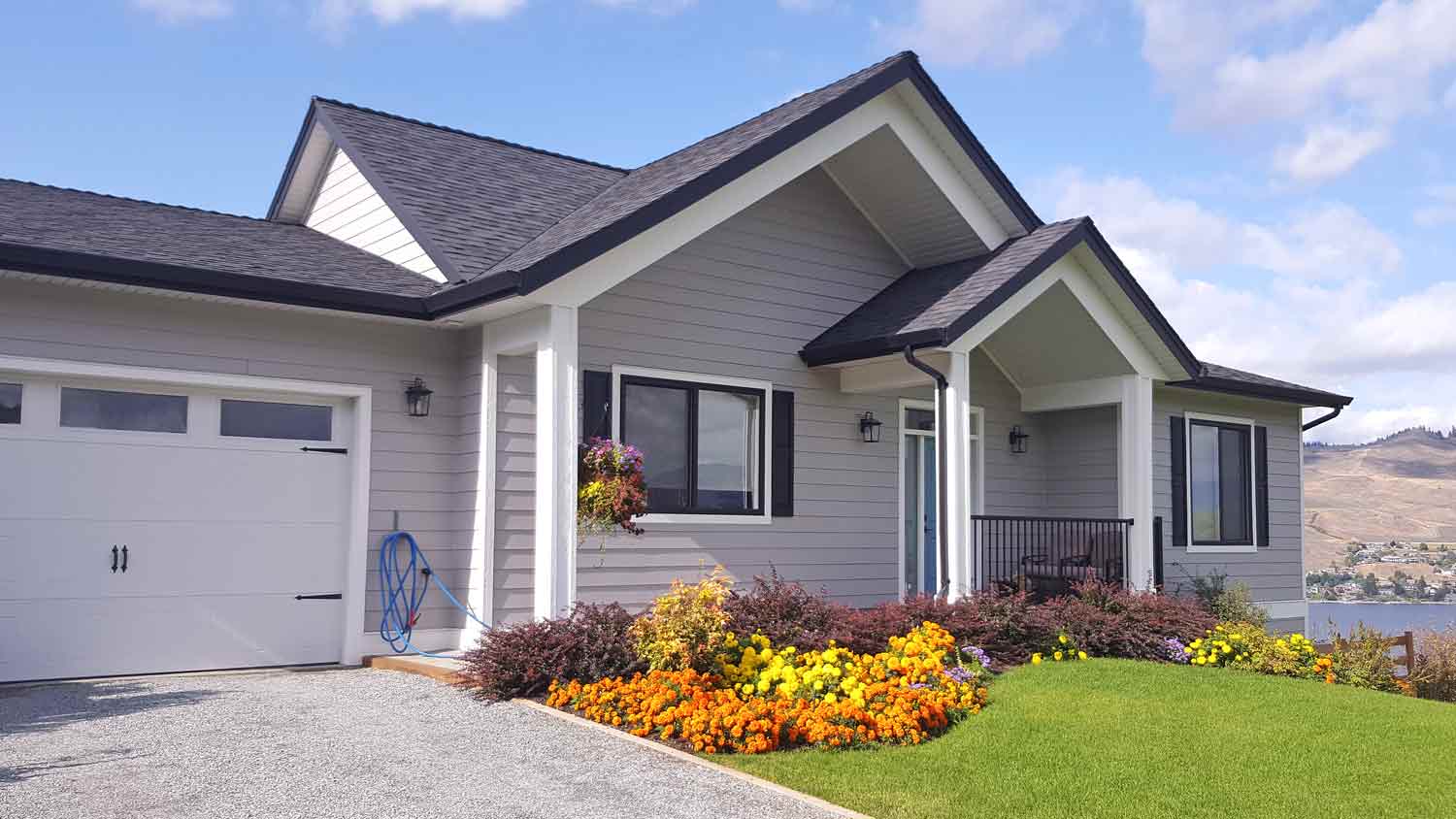
The cost of siding repair varies depending on material, design, and damage. This helpful guide covers the siding repair costs to expect in Columbus, Ohio.
Put your home’s exterior in the lap of luxury with these siding styles


Dutch lap and traditional lap siding both consist of overlapping horizontal planks or boards.
Dutch lap siding has a grooved or notched bottom edge that creates a distinct shadow line.
Both types of siding are available in a range of colors, widths, and materials.
Installing siding involves a wide array of style choices, some with very subtle differences. Dutch lap and traditional lap siding are common siding styles that look very similar at first glance but aren’t quite the same. We’ll explore the differences between Dutch lap and traditional siding so you can make the right choice for your home.
Dutch lap and traditional lap siding both consist of overlapping horizontal planks or boards. Dutch lap is a style of lap siding that differs from traditional lap siding due to its grooved or notched bottom edge, which creates a defined shadow line under each plank or board. Both siding styles are available in a wide array of materials, widths, and colors. A local siding pro can help you select which type of siding will work best for your home.

Dutch lap siding is a type of lap siding that creates a more textured look due to its slightly concave face with a notched bottom edge. The angle of the planks gives a defined shadow between each plank, offering a more dramatic and eye-catching look than traditional lap siding. Dutch lap siding is found on different home styles, including Craftsman, Greek revival, and Victorian homes.
| Pros | Cons |
|---|---|
| Added visual interest | Harder to install |
| Unique aesthetic | Higher cost |
| More upscale look | Grooves are harder to clean |
Best for: Craftsman, Greek revival, and Victorian homes
The main benefit of Dutch lap siding is its aesthetic. The pronounced shadow edge and visual separation between planks can give this siding a more upscale feel and differentiate it from surrounding homes.
Dutch lap siding’s more complex design means it can be more time-consuming and expensive to install. The added groove on the bottom of each plank can also be more difficult to clean than traditional lap siding, which doesn’t have the deep indentation that can collect as much dirt and debris.

Traditional lap siding is installed horizontally and consists of flat planks that slightly overlap to create a subtle ridge between planks. Traditional lap siding is one of the most common siding styles used in the U.S. and offers a classic aesthetic for your home’s exterior.
| Pros | Cons |
|---|---|
| Budget-friendly | Less unique aesthetics |
| Easy to install | Thinner than Dutch lap |
| Available in many materials and styles | May require regular maintenance |
Best for: Budget-conscious homeowners
Traditional lap siding costs less than Dutch lap and is easier and faster to install. This kind of siding is also available in a wide range of color, widths, materials, and styles, making it easy to customize the look of your home’s exterior.
Traditional lap siding won’t stand out from the neighbors when it comes to looks, since it’s such a common siding style. Due to its flat panels, it also tends to be thinner than Dutch lap, and depending on the material, the thinner panels may be more prone to warping and cracking.
Choosing between Dutch lap and traditional lap siding mostly depends on which aesthetic style you prefer, but the two styles differ slightly in some categories. Here’s how they stack up.
Dutch lap, with its defined shadow between planks, offers a slightly more polished and dramatic look than traditional lap siding. While choosing between the two ultimately comes down to preference, Dutch lap has an edge, appearance-wise.
Both types of siding are available in a wide variety of materials and colors, but Dutch lap siding is typically found in lighter colors to enhance the effect of the shadow between planks. Traditional siding comes in a wider array of choices, making it easier to customize the look of your siding.
The cost to replace siding depends primarily on the material you choose, but Dutch lap tends to be more expensive than traditional siding when comparing the same material. The concave shape and notched bottom add to Dutch lap’s price tag.
Both Dutch lap and traditional siding are common types of siding, so siding installers will likely have plenty of experience with both, but Dutch lap’s more complex design means it takes a little longer to install than traditional siding. Hire a siding contractor with experience installing whichever kind of siding you choose to ensure your house is protected.
How long siding lasts will depend on the material you choose, the quality of installation, and how well it’s maintained. Vinyl siding can last 20 to 40 years, while fiber cement siding can have a lifespan of 50 years or more.
Window Depot did an amazing job on my deck. I wasnt sure what I wanted to do, but their composite decking was affordable and will last a long time. I am excited to have family over, and I am no longer embarrassed by my backyard. Jeff and the ground crew were polite, respectful, and caring for...
We used Unique Hardwood Floor LLC three years ago to work on the floors of a 70 year old home that needed a great deal of work. Some floors needed repairs, some were replaced and others just needed to be refinished. It was a complicated job as they needed to blend the old and the new to...
We live in a condo and had space to add a tall cabinet. The problem was the space was already occupied by our catsâ litter box. We needed to still keep the litter box in that same corner. Beiler Custom Cabinets was able to work with our need and design request. What was created was an...
Bill Gerhardt sold the company to his employees at the end of 2019, apparently without a workable succession plan and without notifying prospective customers of this fact. Most aspects of the maintenance contract have not been fulfilled: no installation of anual plantings per contract, no...
The company was very easy to work with. My family is now able to enjoy a space that at one point, only collected junk!!!! I feel like i have a whole new addition to the house!!! Wonderful work Blurock on our basement, will recommend!
Roger met me at a moments notice. I was in a bind. He was available and very accommodating. He was right on time, very professional.. the transaction was seamless! Thank you for your help I look forward to working together more in the future.
We had the solar paneling installed over the summer and the folks from Ecohouse they had a very competitive bid. They were able to make recommendations on the siding, whether it would be a good idea to get solar. They did an excellent job with the installation. They also helped us arrange...
Awful. Made an appointment 1 month in advance. Two days before the delivery appointment they called and said they would be there in the morning to pick up my furniture. The appointment was made at 4:30 in the afternoon, and I had written it down to make sure. I told them that the correct...
From average costs to expert advice, get all the answers you need to get your job done.

The cost of siding repair varies depending on material, design, and damage. This helpful guide covers the siding repair costs to expect in Columbus, Ohio.

In addition to protecting against extreme Midwest temperatures, new siding in Columbus adds curb appeal. Learn about siding replacement cost in Columbus.

New vinyl siding adds value and curb appeal to homes in Columbus, Ohio. Learn about average vinyl siding installation costs in Columbus, Ohio.

Lap siding is a common siding style available in various materials. Learn what lap siding is, its pros and cons, and how much it costs.

Want to learn how to install vinyl siding on a house? Keep reading for insight into the whole process from start to finish.

Need new siding but want a unique appearance and boosted home value? Use this guide on mixing siding types to nail that aesthetic and curb appeal.